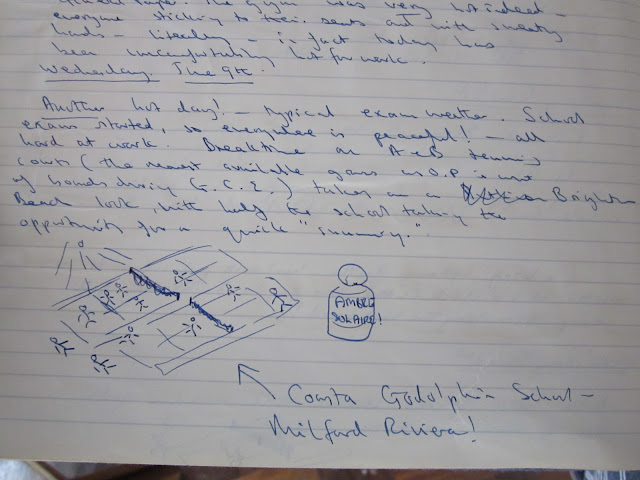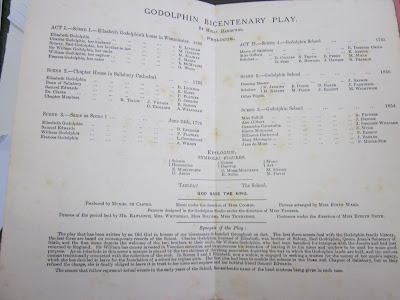But before showing those, below is the record of one particular student's creating, learning and studying in the form of her school reports. The archive holds all the reports from Edith Mary Read's 5 years at Godolphin.
 |
| Edith began Godolphin School in 1905. Students received report every term. |
 |
| To begin with it seems she was an average student... |
 |
This is one of her final reports from Godolphin
|
Miss Douglas makes a point of reminding her to work very hard in her last year at Godolphin as this one is often more valuable than the earlier years. One gets a sense from reading these reports that at the beginning Miss Douglas was commenting on the work of a little lost girl. But by the end of the reports, she has built up a strong relationship with this flourishing student and she even comments on how she will miss Edith greatly.
|
One of the most beautiful treasures in the Godolphin archive, in my opinion, is the collection of botany books. These are the work of students who took nature and botany classes. In the early 20th century this was Miss Isaacson's subject.
Many of the students were very talented drawers and as well as showing this in their lessons and homework, they also practised these skills outside classes....These cards show the talents of the girls but also how each girl seemed aware of everything going on in her 'house' (each student belonged to a house, whether they boarded or not). One can detect a definite community spirit among the girls.
Each house kept a diary of the daily events happening around the school. Students were responsible for these entries. I came across some of them from School House which are now kept in the archive collection. The entries vary from being very short to long. These diaries date all the way from 1920s to the 1980s. One writer whose entries I particularly enjoyed reading chose to elaborate her's with the occassional sketch.
 |
| Thursday 27th May 1976: The diarist depicts the girls in their boaters walking to communion at St Martin's |
Set up by the students, this little club enabled students to write their own amusing ditties or jokes and have them written into this book each term. All pieces were annonymous. For this to occur a little 'pigeon hole' was named the dedicated place poems could be left by writers and received by the editors. The pigeon hole was a napkin hole in the side of one of the dining room tables!
Many of the written pieces are a satirical commentary on school tradition, staff and students. I spent a long time curled up in a corner of the library, distracted by reading this book. I found it utterly gripping and rather amusing, even 60 odd years later. I was so impressed by the wit and charm of the writing by such young girls!






















































